
Keep your English alive! PAST SIMPLE REGULAR VERBS
The past simple and the past participle of make. Conjugation of the verb make: Base Form/Infinitive without 'to': make. Past Simple: made. Past Partciple: made. Present Partciple: making. Third Person Singular: makes. Definition: 1. To produce something. 2. To cause something. 3. To perform an action.

Teacher Ángela's blog 3rd BIL Units Contents
Verb Table for make Continuous tenses Imperative Impersonal Simple tenses Present Past Present Perfect Past Perfect Will -Future Going to -Future Future Perfect Return to the dictionary Top of page Found an error? We appreciate your feedback. Click here! Continuous tenses Present Past Present Perfect Past Perfect Will -Future Going to -Future
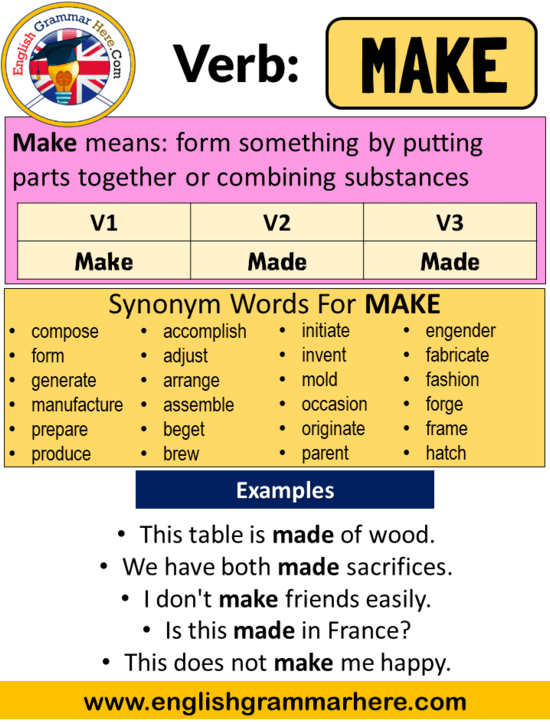
Make Past Simple, Simple Past Tense of Make Past Participle, V1 V2 V3 Form Of Make English
We make the past simple just like the present simple except we use 'did' instead of 'do / does'. It's really easy because 'did' doesn't change, even with 'he / she / it'. The positive: We usually make the positive by adding '-ed' to the infinitive. For example, 'play' becomes 'played'.
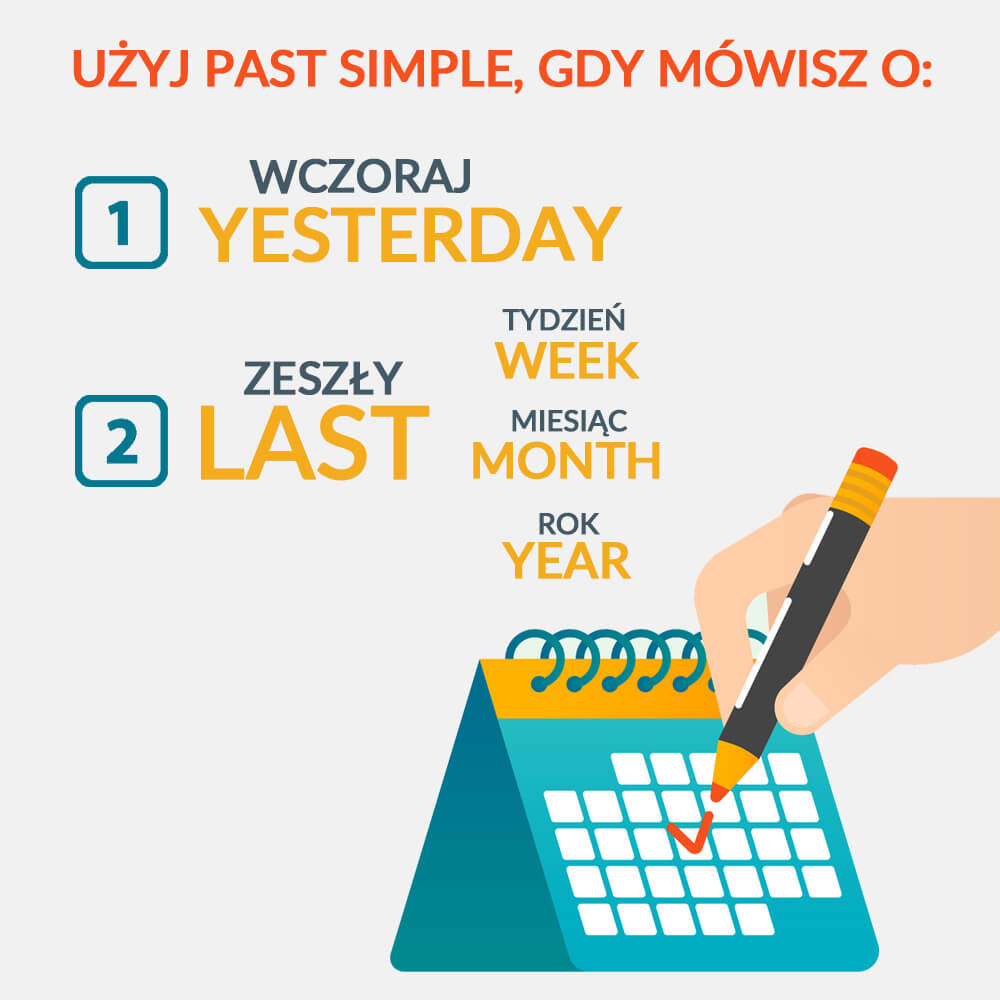
Past Simple w 15 minut
Learn the three forms of the English verb 'make'. the first form (V1) is 'make' used in present simple and future simple tenses. the second form (V2) is 'made' used in past simple tense. the third form (V3) is 'made' used in present perfect and past perfect tenses.
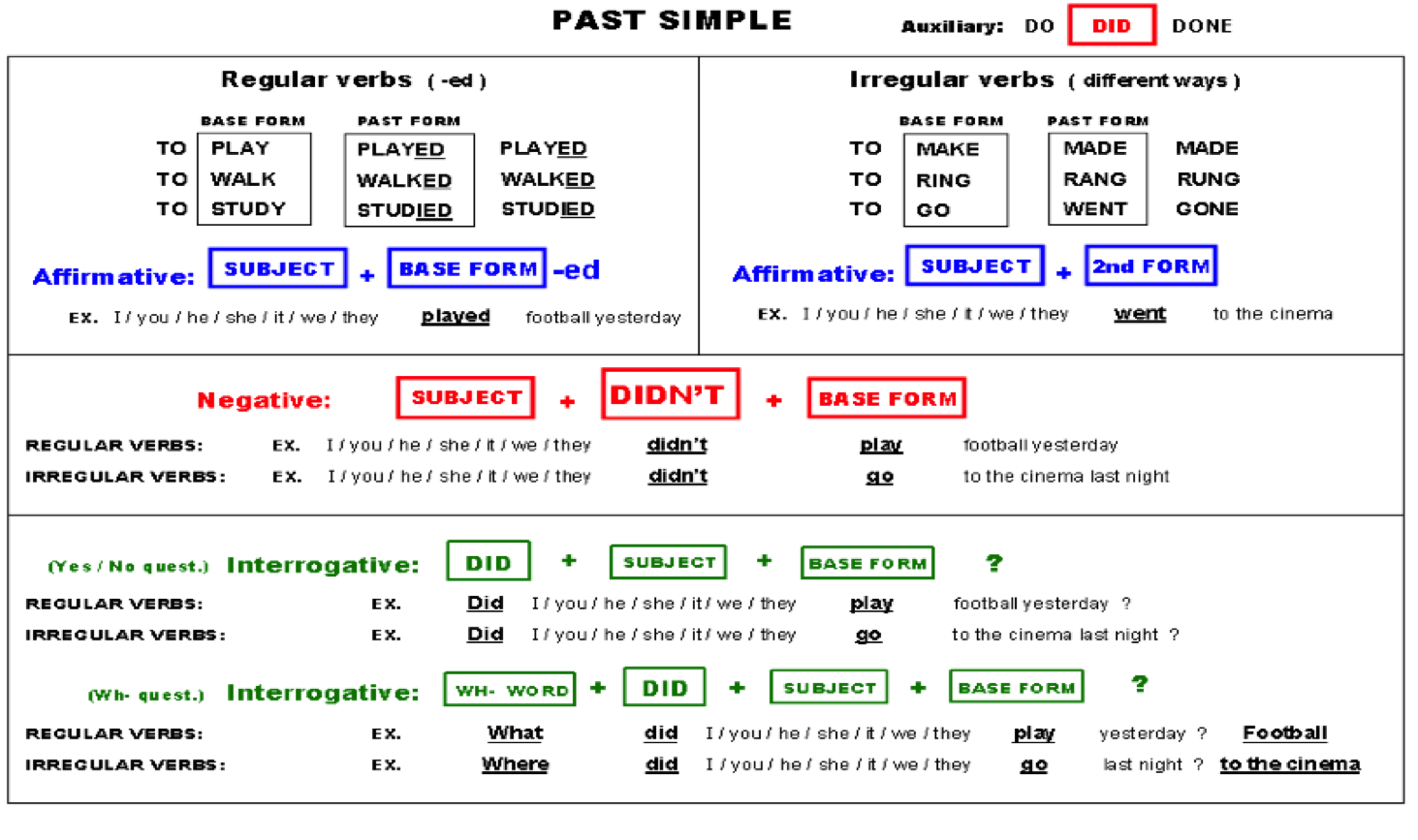
THE TIP OF THE DAY PAST SIMPLE
make - model verb Verbs that follow this model: remake unmake Firefox and Chrome users: install a shortcut (Firefox or Chrome) then type "conj make" in your address bar for the fastest conjugations. make 'make' is the model of its conjugation.. simple past ⓘ Also known as:.

Simple Past Tense
Past Simple: Alan made a telephone call yesterday evening. Past Simple Passive: A telephone call was made yesterday evening at seven. Past Continuous: She was making the bed when the telephone rang. Past Continuous Passive: The beds were being made when the telephone rang. Past Perfect: Jason had made the coffee before we arrived. Past Perfect.

Simple Past Tense Definition & Useful Examples in English ESL Grammar
hacer; tomar; realizar;. Infinitive to make Preterite made Past participle made Modelo : make Auxiliar : have, be Otras formas: make oneself / not make Contracciones Publicidad Indicative Present I make you make he/she/it makes we make you make they make Preterite I made you made he/she/it made we made you made they made Present continuous

Simple Past TenseGrammar Rules Grammarly Simple past tense, Simple past verbs, Past tense
The simple past tense form is created by adding a -ed or -d affix to the root word of the verb. Some verbs use a -t variation where they end in a -t. For example, when "dream" turns into "dreamt." The past perfect tense is formed for regular verbs (ending in -ed, -d, or -t) by adding "had" followed by the verb. For example, "I had finished ."
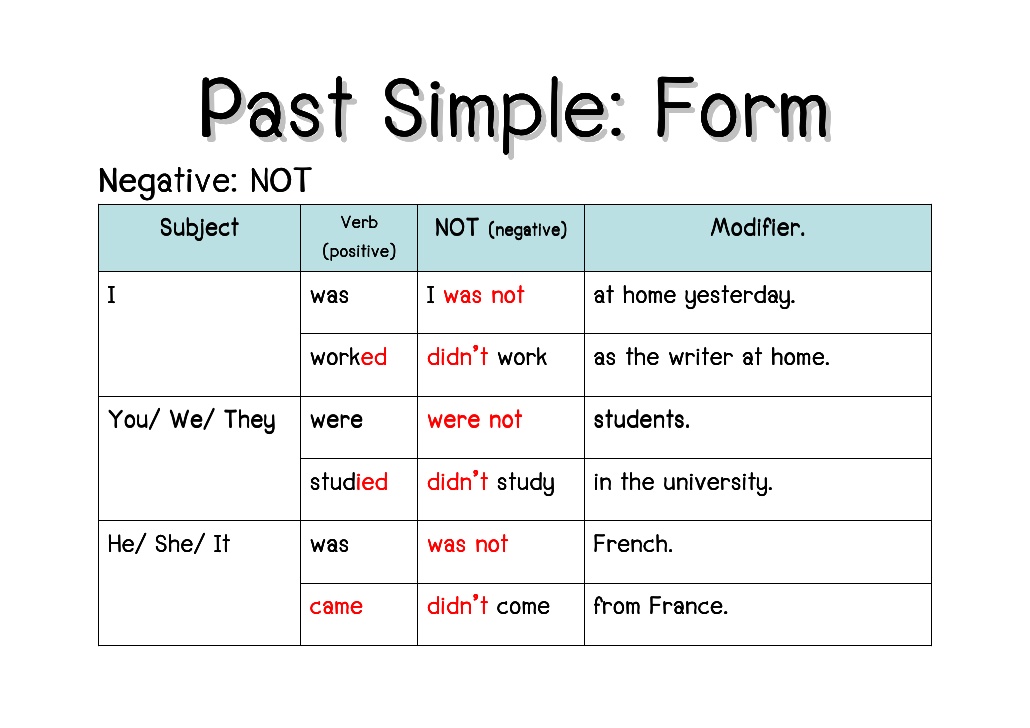
BLOG FOR ESO AT INS MARINA Past Simple
Mixed Exercise 2. Here's another English grammar exercise about the past simple (positive, negative and question). Click here to review how to make the past simple . Click here to download this exercise in PDF (with answers) Do you want to master English grammar? Click here to read about the membership. This is the second of four exercises to.
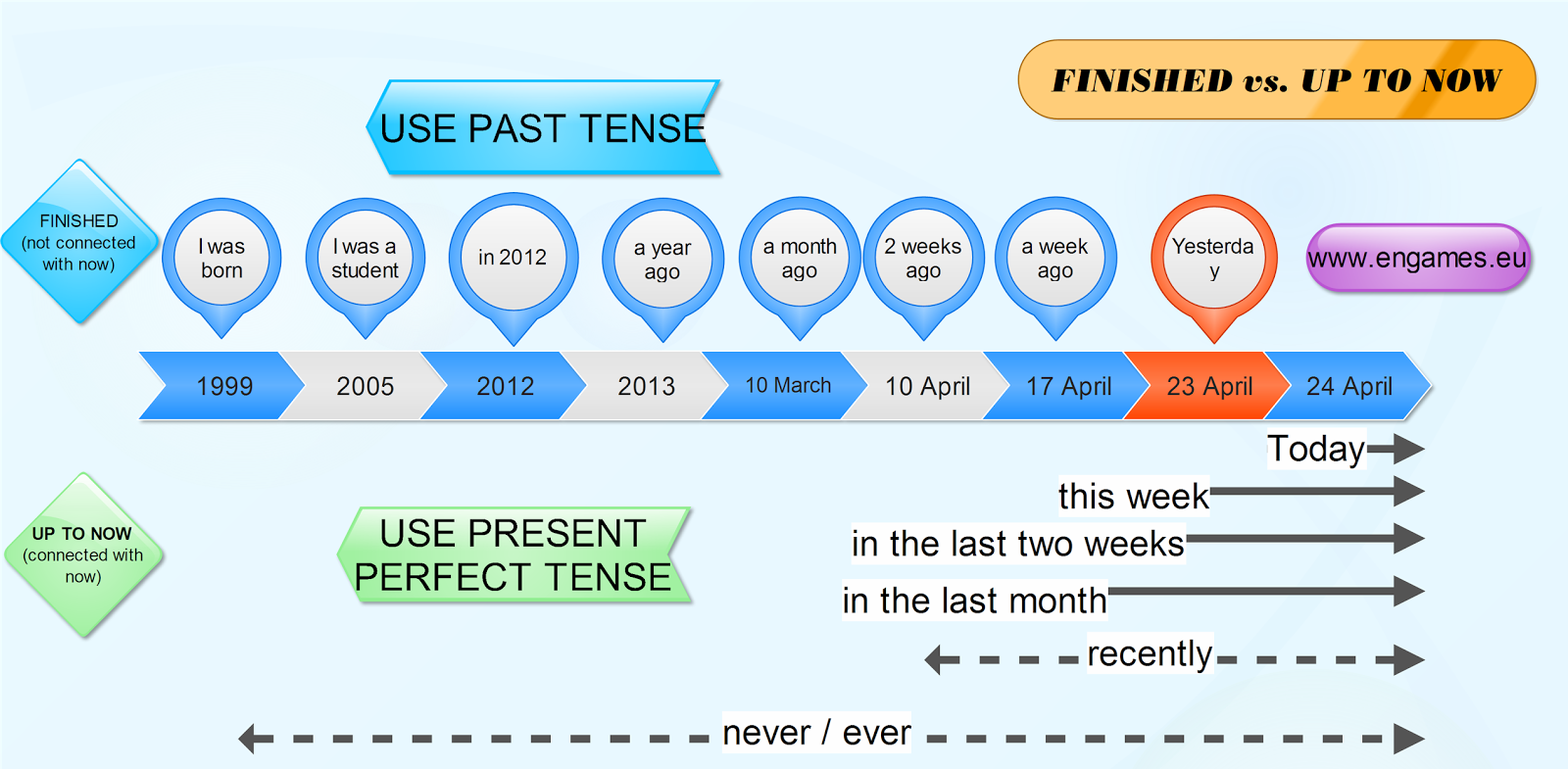
Keep your English alive! PAST SIMPLE vs. PRESENT PERFECT
Simple Past Tense He/She/It made. I made. You/We/They made. Past Continuous Tense He/She/It was making. I was making. You/We/They were making. Past Perfect Tense He/She/It had made. I had made. You/We/They had made. Past Perfect Continuous Tense He/She/It had been making. I had been making. You/We/They had been making. Simple Future Tense

Past Perfect Simple Vs Present Perfect Simple BEST GAMES WALKTHROUGH
Past simple Level: beginner With most verbs, the past tense is formed by adding -ed: called liked wanted worked But there are a lot of irregular past tense forms in English. Here are the most common irregular verbs in English, with their past tense forms: We use the past tense to talk about: something that happened once in the past:

Test Engleski jezik Šesti razred Past Simple VS. Past Continuous
The past simple tense (sometimes called preterite, simple past or past indefinite) is the basic form of the past tense. This is one of the most common past tenses and can describe a lot of events. It is really important to know how and when to use this tense for daily conversation. But there are a lot of irregular past tense forms in English.

Simple Past Tense (Formula, Usage, Examples) ExamPlanning
The past simple is the most common way of talking about past events or states which have finished. It is often used with past time references (e.g. yesterday, two years ago). Please explain past events or states! A past event could be one thing that happened in the past, or a repeated thing. I stopped at a zebra crossing.
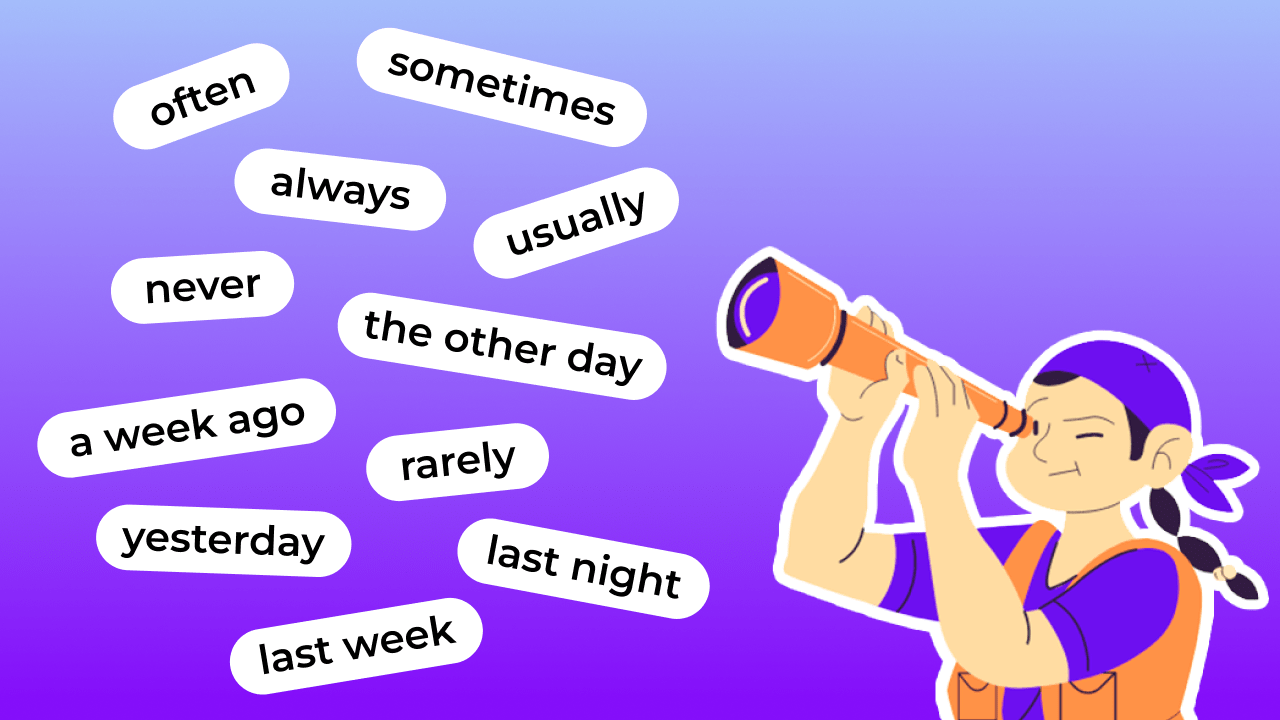
Past Simple правила и примеры употребления, способы образования, секреты, исключения
Conjugation verb make X English Conjugate Toolbox: Models British vs. American English Auxiliaries, modals Irregular verbs make Infinitive to make Preterite made Past participle made Model : make Auxiliary : have, be Other forms: make oneself / not make Contractions Advertising Indicative Present I make you make he/she/it makes we make you make

Our English classroom Past simple
The verb "make" is an irregular verb. (This means that "make" does not form its simple past tense or its past participle by adding "-ed" or "-d" to the base form.) The Five Forms of "To Make" "To Make" in All the Tenses The tables below show how "make" conjugates in the past, present, and future tenses. Past Tenses Present Tenses Future Tenses

Simple Past Tense To Be Simple Past Tense Past Tense Tenses Images
To Make: V2 Past Simple: Made: V3 Past Participle: Made: V4 3rd Person Singular: Makes: V5 Present Participle/Gerund: Making: Subscribe to Ad-Free Browsing. Enjoy a seamless learning experience without interruptions from advertisements. Find out More. Free English Lessons.